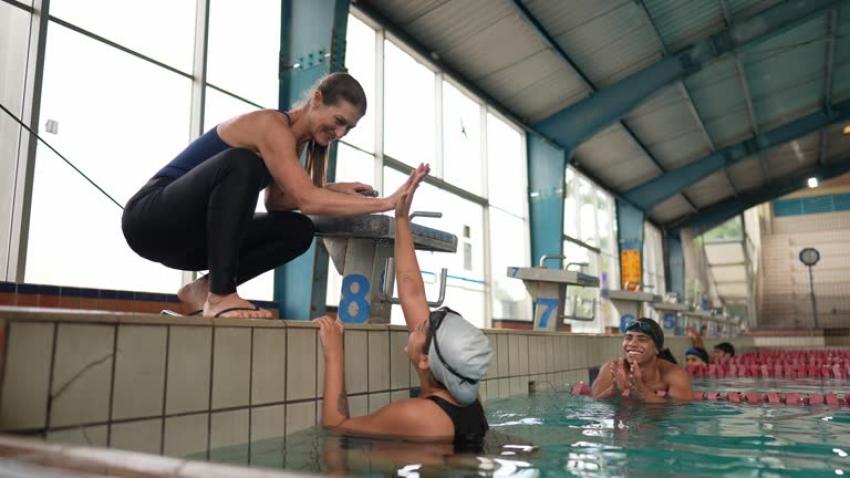
Water safety starts before your feet touch the pool: Water draws us in. It looks calm, but it can change fast. That is why lessons matter. Strong skills turn fear into focus and fun. Effective coaching fosters habits that last a lifetime.
The right swimming approach supports both kids and adults, creating safer moments at pools, beaches, and parks. Enrolling in the best swimming lessons in Los Angeles CA, teaches more than technique—it builds awareness, calm, and respect for water. In this guide, we’ll outline what defines a great program and how each lesson contributes to protection and peace of mind.
Safety First: How the Best Swimming Lessons in Los Angeles CA Prevent Risk
Safety is not an add-on. It is the core of every class. In the best swimming lessons, coaches set clear rules. They teach safe entries, exits, and breath control. They practice roll-to-float, safe treading, and calm signals for help. Then they match drills to each swimmer’s level. As a result, students gain both skills and calmness simultaneously. Instructors also watch body language and energy. When a swimmer tires, they pause and adjust. Because safety is constant, swimmers relax and learn more. They start to trust the water and themselves. And that trust helps them think clearly during surprise moments.
Skills That Save Lives: The must-know basics
Core skills protect you when things go wrong. They also make daily swimming more fun and smooth. Below are the everyday abilities that matter most. Practice them often, and they will become automatic.
Essential skills you should master:
- Controlled breathing with the face in the water
- Front and back float with easy recovery
- Tread water for one minute or more
- Streamline push, glide, and safe turns
- Basic freestyle, backstroke, and breaststroke starts
- Safe entries, exits, and spotting shallow zones
These skills work together under stress. Therefore, they help in pools, lakes, and the ocean. Over time, small wins stack into strong confidence.
What Makes a Program “Best”: Coaching, class size, and progress
A great program focuses on people, not just laps. Coaches track progress and keep groups small. They give clear goals for each week. Then they test skills in simple steps. Because feedback is timely, swimmers improve faster. Parents also receive updates that are easy to understand. That reduces worry and builds trust.
“The ‘best’ program is the one that teaches safety first, meets you where you are, and shows your progress.”
Programs with steady schedules help families stay on track. Also, consistent instructors speed learning. Finally, well-run classes set the tone at the pool deck. Order, kindness, and respect make safety easier for everyone.
Habits That Protect: Warm-ups, checklists, and simple rules
Safety starts with repetition and structure. In the best swimming lessons in Los Angeles CA, students build small habits that lead to lasting confidence. Warm-ups engage the body, checklists ensure nothing is missed, and clear rules maintain focus and safety.
Quick habit table
Habit/Rule Why It Helps Benefit
Buddy check No one swims alone You always have help close by
Depth scan Know shallow and deep zones You avoid sudden drop-offs
10-second breath reset Calm your heart rate You think clearly under stress
Exit plan scan Spot ladders and steps early You save time when you need out
Gear check Goggles fit and straps secure You focus on skills, not fixes
When these habits stick, reaction time improves. So, swimmers handle surprises with less panic and more control.
Coaching for Every Age: Matching lessons to the learner
People learn at different speeds. Therefore, effective programs tailor lessons to the age and experience of their students. This keeps training safe, respectful, and fun.
Early swimmers
Young children learn water comfort, breath control, and gentle floating techniques. Coaches use games to teach skills without fear.
School-age swimmers
Children build stroke basics, learn safe diving techniques, and develop longer treading skills. They also practice pool rules until they become automatic.
Teens and adults
Older swimmers refine strokes, pace breathing, and practice rescues. They learn how to spot rip currents and use calm signals.
Because lessons fit the person, growth feels steady. Additionally, aligning the plan with the learner reduces stress. Over time, small steps turn into strong, safe swimmers.
Partnering With Parents and Guardians: Support that speeds progress
Parents are key to safety. When they know the plan, kids grow faster. Clear updates, simple drills, and steady practice make a difference. Coaches should explain how to help at home. Then, families can reinforce skills between classes.
Simple ways families can help:
- Review pool rules before each swim
- Practice floating and breathing at bath time
- Set short goals and celebrate progress
- Keep towels, goggles, and water ready
- Model calm behavior near water
“When adults stay calm and consistent, kids feel safe—and safe kids learn faster.”
Because support is steady, skills become habits. And those habits protect during real-world moments.
Choosing Local Lessons: Fit, access, and community
Local classes offer more than just pool time—they fit your life. Schedules align with your week, travel stays short, and your community grows stronger. When exploring Los Angeles swimming lessons, look for trained coaches, small class sizes, and programs that include safety drills and emergency plans.
Additionally, verify that the program tracks progress using simple tests. Transparent feedback builds trust. Moreover, thoughtful class sizes reduce crowding and raise focus. Finally, a clean, well-run deck signals strong leadership. When the basics look solid, learning feels easier. As you compare programs, use what matters most: safety, clarity, and steady progress. Those are the pillars that protect every swimmer.
FAQs
Q: How many lessons does a beginner need to feel safe?
A: It varies, but steady weekly lessons build comfort within a few months.
Q: Are private lessons better than groups?
A: It depends on goals. Private sessions target individual needs; small groups add social learning benefits.
Q: What should I bring to class?
A: Bring fitted goggles, a snug suit, a towel, and water. Ask about caps.
Q: Can adults start from zero?
A: Yes. Many adults start late. With patient coaching, they progress quickly and safely.
Keep water, joy, and safety side by side
Water should be a place of joy, not worry. When Los Angeles swimming lessons focus on safety, skills, and calm habits, families relax. Then swimmers build strength that lasts a lifetime. When selecting a program, look for clear rules, small group sizes, and consistent feedback. Choose a team that prioritizes safety as the plan, not an afterthought. With the best swimming lessons, you gain skills, habits, and peace of mind—every time you step on deck. When you are ready to begin, bring your goals, your questions, and your courage; the rest will grow with each careful, confident lap with BLAST Swim Team.



